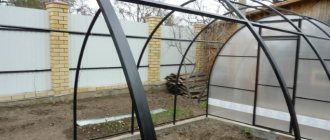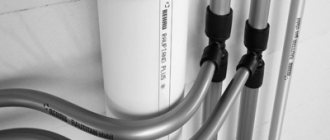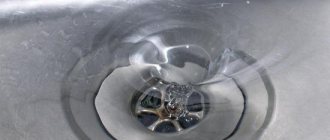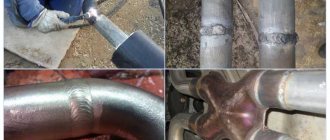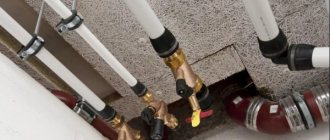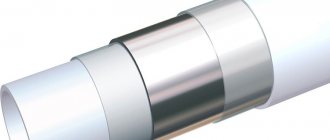Metal-plastic pipes were developed specifically for water underfloor heating. That is why they have a large bending radius, which is essential to cover the maximum floor surface.
Bending of metal-plastic pipes
There are different ways to bend a pipeline, all of them are quite simple and can be easily done at home. Knowing the basic rules of how to bend a metal-plastic pipe will facilitate and speed up the process of installing a “warm floor” system.
Bending methods and tools
Bending metal-plastic is a responsible process. Too much force applied to the pipe product can deform it or even damage the inner aluminum ball, causing the pipeline to lose its heat-resistant properties.
You can bend a pipe correctly at home using one of the following methods:
- Gently bend by hand.
- Use a specially purchased pipe bender at home.
- Apply the spring.
Purchasing a pipe bender is economically feasible only if there is a significant amount of work. For one-time bending of metal-plastic lines at home, you can use alternative methods.
Bending with a spring
As an aid when bending tubes at home, heating with a construction hairdryer or adding sand is widely used, which gives additional flexibility to the material.
How to bend a metal-plastic pipe: basic methods
There are bends and turns in almost every pipeline plan. Therefore, the technology of bending metal-plastic pipes is used very often. If you try to give a pipe the desired shape without knowing its characteristics, you can ruin the product. Fragile metal-plastic walls can become deformed or crack.
If it is necessary to bend a metal-plastic pipe at home, several methods are used.
Manual pipe bending. The most affordable method of bending metal-plastic pipes, which does not require the use of tools. You can bend a structure with your hands, the diameter of which does not exceed 20 mm. Large diameter pipes are difficult to bend manually. Despite the speed, this method can be called the most unreliable. Whether it is possible to bend metal-plastic pipes in this way without disturbing their structure is a matter of practice, but without some experience there is too great a chance of compromising the integrity of the material.
Springs for bending metal-plastic pipes. This method is optimal for structures made of medium-hard metal-plastic. Springs for bending metal-plastic pipes, provided the diameter is correctly selected, allow you to achieve high bending accuracy. For this you will need a fairly strong spring that cannot be deformed. A wire of sufficient length is attached to one of its ends to remove the spring after bending.
To facilitate the bending process, the pipe can be heated with a hair dryer
The spring is pushed along the inside of the pipe to the place where the bend is planned. It is important to ensure that the centers of the spring and the future bend coincide exactly. The product bends smoothly at the desired angle, while you can rest it with your knee. Once bending is complete, the spring is removed.
Rigid wire for bending metal-plastic pipes . The process of bending with wire is longer, but also quite effective. The wire is cut into small pieces, which should be used to fill all the voids in the pipe at the bend. The wire layer will serve as a frame that prevents the appearance of irregularities and breaks. Next, the pipe is bent in the same way as in the case of a spring. The used wire is carefully removed from the structure. It is also necessary to check whether there are any pieces left in the pipe.
Application of sand . One of the most labor-intensive bending methods. It is often used in cases where the required spring size cannot be found. Fine sifted sand is poured into the pipeline part so that there are no empty spaces left in the pipe. Plugs are placed on both ends of the pipe to prevent sand from spilling out. The product is clamped in a vice in a place sufficiently distant from the intended bend. Before bending, the pipe section is heated with a blowtorch.
Helpful advice! There is a danger of overheating the pipe, so you should check the degree of heat of the sand. To do this, bring a sheet of paper to the heating site. If the paper begins to char, the sand is sufficiently calcined.
Sand poured inside the pipe will prevent deformation of the pipe during bending.
After giving the product the desired shape, the sand is poured out. If necessary, the pipe can be washed. Salt can also be used instead of sand.
Hand bending is a method accessible to everyone
If you do not have a special construction tool at hand, but you still need to bend the pipeline, the manual method will do. All that is needed is knowledge of how to bend a metal-plastic pipe and some caution. It is necessary to perform the following steps step by step:
- Carefully bend the pipe so that the bend radius is no more than 20 degrees.
- Grab the pipe a little higher with your hands and bend it slightly again.
- Perform a series of bends (up to 15 pieces) to obtain a radius of 180 degrees.
- If it is necessary to align the pipe product, this must be done in the reverse order, also slowly and step by step.
Attention! Sudden movements are prohibited. There is no need to try to bend the pipeline in one go.
Hand bending
Manual bending can be successfully carried out with small diameter pipe products. If the section size exceeds 20 mm, you can no longer do without tools.
Calculation of the bending radius of a metal-plastic pipe
There is a universal formula for calculating the bending radius of a metal-plastic structure. According to this formula, the bending radius will be equal to 5 diameters of the pipe section. The principle of operation of this rule can be clearly illustrated using the example of a pipe with a diameter of 20 mm:
- For subsequent calculations, you need to determine the quarter circle. If the given diameter is 20 mm, then the radius, according to the formula, is 100 mm (20 x 5 = 100).
- The starting points for bending the corner are calculated. The formula used is C = 2ΠR/4, where C is the size of the area where the work will be carried out; Π = 3.14; and R is the radius obtained above. Substituting your own data, you get the following: 2 * 3.14 * 100 mm /4 = 157 mm. So, a section of pipe 157 mm long will be involved in bending.
- It turns out that every 10-20 mm is about 15 degrees of the total bend. The boundaries of the area are marked with a pencil on the surface of the pipe. Now you can start any bending method.
Pipe bender: how to use it
Using a pipe bender is the best option. This method allows you to correctly bend products of any diameter without damaging their internal multilayer structure. The advantages of using a pipe bender are:
- Minimal risk of deformation;
- Suitable for products of any diameter;
- Easy to use.
To use this device, you must:
- Select the required bending radius on the device body.
- Insert the tubular product.
- Bring the handles together, thereby performing a bend.
Pipe bender for metal-plastic pipes
A pipe bender is a specially designed device for bending pipes.
A pipe bender has a lot of advantages; the only drawback may be the price of the tool, which is too high for a single use. However, for professional use there is no better method.
Pipe bending spring
At home, it is convenient to use a metal spring, which will help bend the tubular product without damaging its internal structure. The procedure looks like this:
- A metal spring is inserted into the pipeline.
- Bending is performed using gentle hand movements.
- The spring is removed.
Spring for bending metal-plastic pipes
The difficulty with this method may be finding a spring of the required diameter. Metal wire has been successfully used as a replacement.
How to bend metal-plastic pipes using a pipe bender
A pipe bender (Volnov machine) is a device that allows you to easily bend a metal-plastic pipe at home. A pipe bender will allow you to bend structures without preheating; the bending radius can reach 180 degrees. Bending metal-plastic products using a pipe bender is completely safe, and the possibility of defective parts is completely eliminated. Volnov's manual machine has a simple design. It consists of a handle, a movable roller, a template roller, a bracket and a curved pipe. This device is very easy to use; you can even make it yourself.
At home, crossbow or spring pipe benders are most often used. It is better to lightly lubricate the surface on which the pipe will be bent before starting work. This will reduce friction between parts and the surface of the pipe will not be damaged.
Helpful advice! An analogue of a pipe bender can be made at home. It will consist of boards cut according to a semicircular pattern. Such a pipe bender must be tightly fixed to the base. It is important that the thickness of the board exceeds the diameter of the pipe.
More modernized models of pipe benders, such as hydraulic or electromechanical, are available for sale. On the farm, a pipe bender can be useful only for its intended purpose, that is, during repair or installation of a pipeline. Therefore, purchasing expensive models only makes sense if there is a very large amount of work to be done or if such work will be permanent.
Working with a pipe bender reduces the risk of pipe deformation when bending
Additional bending methods
Heating the pipe with a construction hairdryer and pouring sand can be used as independent or additional methods when bending the pipe. They allow you to speed up the bending process using the manual method and perform the operation in one go.
Heating with a construction hairdryer is carried out as follows:
- The pipeline is evenly heated by a flow of warm air from all sides.
- In one motion, the bend is made to the required radius.
Instead of a hair dryer, you can use a regular blowtorch for heating.
Additional bending methods
The sand method involves:
- Close one of the pipe holes.
- Carefully pour sand inside the product.
- Make a bend of the required radius.
Metal-plastic pipes have different rigidities and therefore require different bending forces. While simple manual bending is sufficient for some products, it is better to preheat others with a hair dryer or blowtorch. You can determine the degree of rigidity by performing a test bend on a small section of the pipeline.
Bending metal-plastic pipes at home: tips and tricks
Before starting work, it is worth making several test bends on the sample. This will help determine the required pressure force, choose a comfortable position and bending method. But whatever bending method is chosen, strong pressure and bending should not be allowed. A perfectly even bend cannot be achieved with a sharp movement.
Metal-plastic pipes of different brands and manufacturers will have different degrees of rigidity. Accordingly, they will also bend differently. If you have no experience in using metal-plastic products, you can purchase several pieces for training. In order for the pipe to keep the required shape, you can bend it to a sharper angle and then bend it to the desired angle. This way the structure will be securely fixed.
All technologies for bending metal-plastic pipes described above are time-tested and are actively used in the construction industry. There is nothing technically difficult in creating an even pipe bend that does not interfere with the functioning of the system. The main thing is to follow the instructions and act as carefully as possible.
